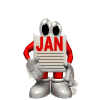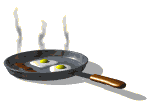|
|
|
|
||||||||||||||||||||||||||||||||||||||||||||||||||||||||||||||||||||||||||||||||||||||||||||||||||||||||||||||||||||||||||||||||||||||||||||||||||||||||
|
Numeracy problems to solve for Key Stage 1, 2 and 3 Task
A I live in Karungu in Kenya with my granny. I get up at 7 o'clock and eat the ugari granny has made. I walk to school. It starts at 8 o'clock. There is another school in the afternoon so I go home at 1 o'clock. After lunch at 2 o'clock I help my granny. I get water from the tap outside and I help in the garden. Sometimes neighbours call at 3 o'clock and we all work together sewing school uniforms or mending bicycles. At 5 o'clock granny starts to make the matoki and uji for our dinner. At 8 o'clock we light the candles and go to bed. Task B Task C What are you doing then?
I don't think you'll be awake!! The table is started for
you.
An extra challenge Daniel lives
in New York. Time is 5 hours behind us.
|
|
||||||||||||||||||||||||||||||||||||||||||||||||||||||||||||||||||||||||||||||||||||||||||||||||||||||||||||||||||||||||||||||||||||||||||||||||||||||||
No doubt, you know the date of your birthday. But do you know the exact day of the week when you were born? Using the tables and method below you can work out which day it was on any date from the beginning of the Christian era (i.e. the year since Christ's birth) up to the year 3 000 AD.
Lets see how this works by finding out on which day of the week was christmas Day 1997. Step 1 - Write the last 2
digits of the year. Step 2 - Divide this number
by 4 and ignore any remainder you get in your answer. Step 3 - Add the day of the month i.e. 25 Step 4 - Add the code number
for the month from Table 1. Step 5 - Add the code number
for century from Table 2 Step 6 - The total of all
the steps is 97 + 24 + 25 + 1 + 5. This equals 152 5 means Thursday. So Christmas Day, 1997 was on a Thursday. Task A Task B Task C 1. Mary Bryant, her husband William, their 2 Children and 7 other convicts stole a six-oared cutter and went ashore at present day Newcastle, Australia on 30th March 1791. Which day was this? 2. mary was caught and return to sydney by the ship 'Gorgon' and sentenced to jail indefinitely on 18th March 1792. 3. Mary was granted an unconditional pardon on 2nd May 1793. 4. Queen Elizabeth II was crowned on 2nd June 1953. 5. man first landed on the moon on 24th June 1969. 6. The first London Marathon
took place on 29th March 1981.
The Department of Health recommends individuals limit the amount of fat in their diet to less than 30% of a day's calories. The chart below lists some information about fast food breakfasts.
An extra challenge How healthy are they?
|
|
|||||||||||||||||||||||||||||||||||||||||||||||||||||||||||||||||||||||||||||||||||||||||||||||||||||||||||||||||||||||||||||||||||||||||||||||||||||||||
|
|
|
|||||||||||||||||||||||||||||||||||||||||||||||||||||||||||||||||||||||||||||||||||||||||||||||||||||||||||||||||||||||||||||||||||||||||||||||||||||||||







